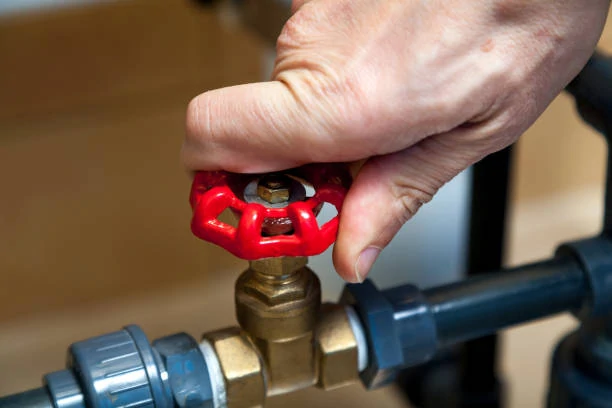Brass ball valves are essential components in many plumbing, industrial, and HVAC systems due to their durability, reliability, and ease of use. These valves control the flow of liquids and gases in various applications, and proper maintenance is crucial to ensuring their long-term functionality. This guide provides comprehensive information on the maintenance and care of brass ball valves.
Understanding Brass Ball Valves
A brass ball valve is a type of quarter-turn valve that uses a spherical ball with a hole through the center to control the flow of fluids. When the handle is turned, the ball rotates to align or block the flow path. Brass, an alloy of copper and zinc, is chosen for its corrosion resistance, strength, and malleability, making it suitable for a wide range of environments.
Regular Inspection
Routine inspection is the first step in maintaining brass ball valves. Regularly check the valves for signs of wear, leaks, or damage. Look for the following issues:
1.Leaks: Check around the valve body, stem, and connections for any signs of leakage. Leaks can indicate worn seals, loose fittings, or internal damage.
2.Corrosion: Inspect the brass body for corrosion or discoloration. While brass is resistant to corrosion, it can still degrade over time, especially in harsh environments.
3.Handle Operation: Ensure that the handle operates smoothly and the valve turns fully from open to closed positions. Difficulty in turning the handle can indicate internal problems or misalignment.
Cleaning
Cleaning brass ball valves is essential to prevent buildup that can affect performance. Here’s how to clean them:
1.Turn Off the Supply: Before cleaning, turn off the water or gas supply to the valve.
2.Drain the System: Ensure that all fluid is drained from the system to prevent spills.
3.Disassemble the Valve: If necessary, disassemble the valve according to the manufacturer’s instructions. Be cautious not to damage any components.
4.Clean the Valve: Use a soft cloth to wipe away dirt and debris. For stubborn deposits, use a mild soap solution or brass cleaner. Avoid abrasive cleaners that can scratch the brass surface.
5.Rinse and Dry: After cleaning, rinse the valve with clean water and dry it thoroughly.
Lubrication
Proper lubrication is critical for the smooth operation of a brass ball valve. Follow these steps for lubrication:
1.Select the Right Lubricant: Use a lubricant recommended by the valve manufacturer. Typically, a silicone-based or Teflon-based lubricant is suitable for brass ball valves.
2.Apply Lubricant: Apply a small amount of lubricant to the valve stem and the ball. Avoid over-lubrication as excess lubricant can attract dirt and debris.
3.Operate the Valve: After lubrication, turn the valve handle several times to distribute the lubricant evenly across the moving parts.
Tightening and Sealing
Over time, the connections and seals in a brass ball valve can loosen. Regularly check and tighten these components as needed:
1.Check for Leaks: If you notice any leaks, check the tightness of the fittings and connections.
2.Tighten Connections: Use a wrench to tighten any loose connections, but be careful not to overtighten, which can cause damage.
3.Replace Seals: If the seals are damaged or worn out, replace them promptly to prevent leaks.
Handling and Operation
Proper handling and operation of brass ball valves can extend their lifespan:
1.Avoid Over-Torquing: Do not force the valve handle. Apply only the necessary force to operate the valve.
2.Operate Regularly: Exercise the valve periodically to prevent the ball from becoming stuck in one position. This can help prevent internal corrosion and maintain smooth operation.
Winterization
In regions where freezing temperatures are a concern, winterizing your brass ball valves is essential:
1.Drain the Valve: Ensure that all fluid is drained from the valve to prevent freezing and expansion.
2.Insulate: Use pipe insulation or valve covers to protect the valve from freezing temperatures.
Troubleshooting Common Issues
1.Valve Doesn’t Turn: If the valve is difficult to turn, check for obstructions, misalignment, or corrosion. Lubricate the valve and ensure the handle is properly attached.
2.Leaks Around the Stem: If you notice leaks around the stem, the packing may need adjustment or replacement.
3.Valve is Stuck Open or Closed: If the valve is stuck, you should check for internal blockages or debris. In some cases, you might need to disassemble and clean it.
Professional Servicing
While individuals can perform many maintenance tasks, they may need professional servicing for complex issues. If you encounter significant problems or are unsure about performing maintenance tasks, consult a professional plumber or technician.
Conclusion
Maintaining brass ball valves involves regular inspection, cleaning, lubrication, and proper handling. By following these guidelines, you can ensure that your brass ball valves function effectively and last for years. Regular maintenance not only extends the life of the valve but also helps prevent costly repairs and ensures the smooth operation of your systems.
Contact
IFAN is a professional manufacturer with 30 years of experience, dedicated to producing high-quality plastic pipes, fittings, and valves. Our products include brass valves, PPR valves, as well as various pipes and fittings to meet different customer needs. Whether you need plumbing and drainage pipes or valve products, IFAN can provide a diverse range of high-quality, cost-effective products to support your projects. Below is our contact information.
We will reply your email or fax within 24 hours.
You can call us at any time if there is any question on our production.
For more information,pls visit our webside https://www.ifanplus.com/
Pls Mailto: [email protected]






